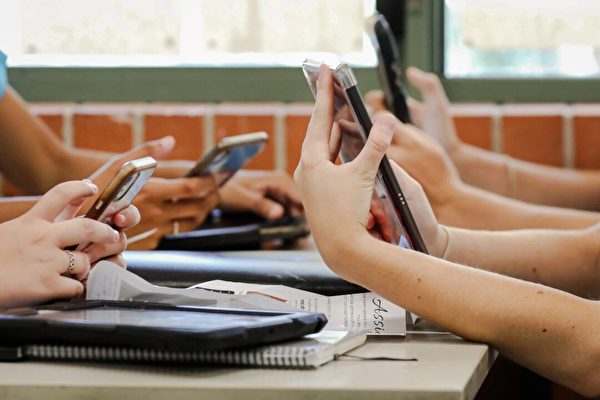In Miami, high school student Arabella shared her thoughts on the issue of banning cellphones in schools in an interview with The New York Times. She pointed out the concerning behavior of students being glued to their phones while walking on campus, completely ignoring the world around them. Arabella mentioned witnessing classmates bumping into walls or each other while being absorbed in their electronic devices.
This behavior, while somewhat comical at times, can also pose serious risks. Compared to the disruption and chaos caused by phones in classrooms, bumping into walls seems like a minor concern.
Another American high school student, Mylea, also expressed her opinion to The New York Times, advocating for cellphone bans in schools. She highlighted the negative impact phones have on student performance, noting how children in classes constantly playing with phones see their grades decline and ultimately fail. Mylea added that phones can encourage bullying behaviors, such as taking inappropriate photos and harassing others online.
Schools worldwide are increasingly implementing bans on cellphone use in classrooms, each with different regulations. Some schools promote self-discipline, requiring students to resist the urge to use phones, while others physically lock phones away at the start of the day.
A guidance counselor in British Columbia, Canada, noted the benefits of a cellphone ban at their school. Tulani Pierce from Chatelech Secondary School mentioned improvements in students’ mental health, a decrease in bullying incidents, increased classroom engagement, and more social interactions.
Recently, the Ontario government announced the strictest classroom cellphone restrictions across the province. According to the Ministry of Education, students from kindergarten to Grade 6 must keep their phones on silent and out of sight during class unless explicitly permitted by the teacher. For students in Grades 7 to 12, cellphone use is prohibited in class unless instructed otherwise.
These regulations are positive steps. Essentially, students can have phones on them but are not allowed to use them during class time.
However, enforcement remains a significant challenge. Teachers and administrators have expressed limitations in ensuring compliance with the bans, emphasizing the need for support when implementing strict measures.
If a student uses a phone, it should be confiscated, with teachers holding onto the device for the entire day placed on their desks or in the office.
The current challenge facing school systems is a lack of proper consequences for various misbehaviors, with phone usage being one of the least penalized issues. Children are becoming increasingly violent, not only towards each other but also towards teachers. The Ontario Secondary School Teachers’ Federation has reported incidents of violence against its members and filed formal complaints.
Establishing consequences for rule-breaking, starting with minor infractions like phone use, is vital in educating students about accountability.
Consider the broken windows theory in schools: allowing children to escape punishment for minor infractions may lead to more severe behavior.
Ontario has taken further action by banning social media use on school premises. The announcement states that all school networks and devices will block social media websites, and report cards will include assessments of students’ level of distraction in class.
The final point is crucial; incidents must be documented and communicated to parents. As a parent, it’s important to know if your child is constantly on their phone (we tell our young children they can’t have phones yet when they ask for them).
This issue is more severe than it initially appears. Using phones during class time not only erodes social norms but also complicates children’s learning experiences.
We need these bans and strict enforcement to address the issue adequately.

